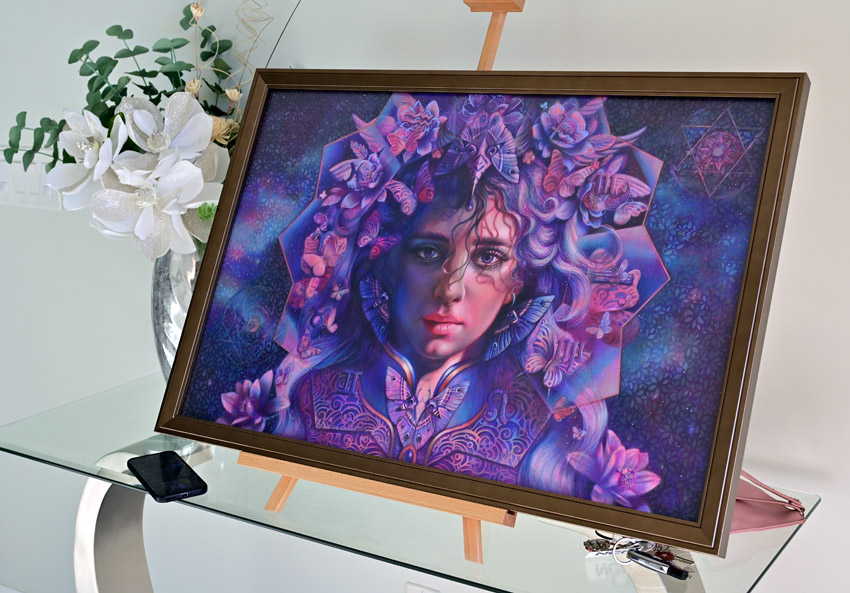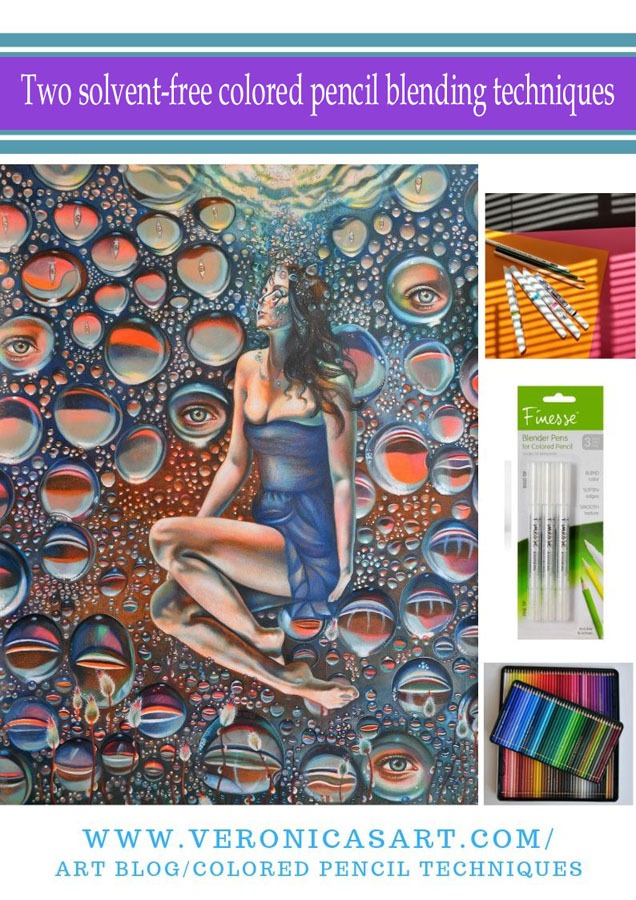Most of you know that we can blend colored pencils with solvents or the colorless blender. In this article I’d like to share some other blending techniques that don’t require blending with Gamsol. While these blending techniques may not be brand new, I discovered these methods by experimenting with my colored pencil drawing.
Because blending with solvents may look harsh on drawing paper, not every drawing is a good candidate for it. I think solvents help a lot when you draw on the textured surface, or the size of your drawing paper is very large, and you want to cover and build the tones in the background. Not every artist likes blending with the solvents. So here is the alternative to that.
Colored pencil blending without the use of solvents
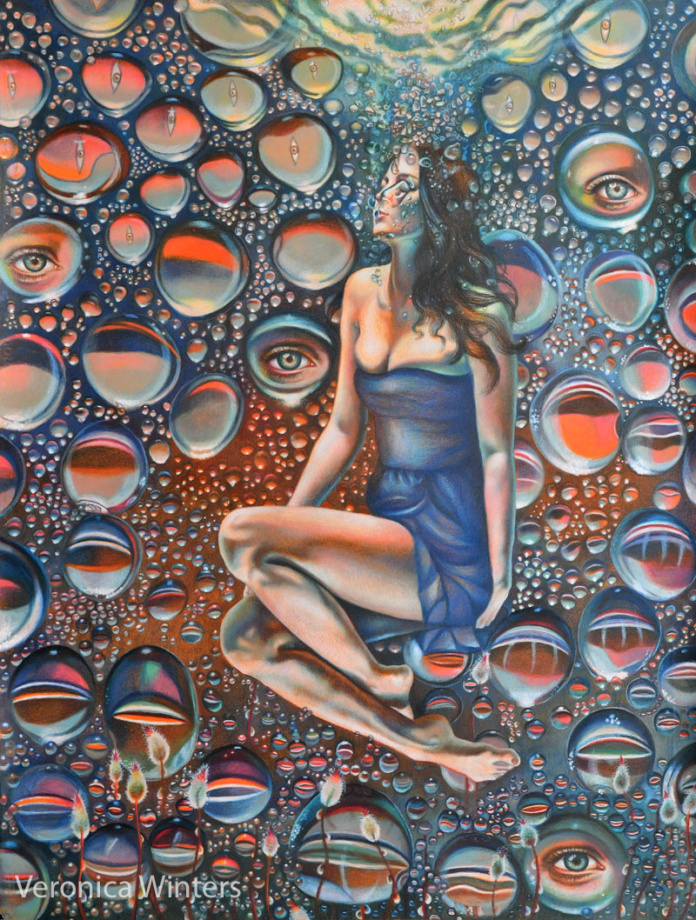
In this drawing titled “Plunge” 19×25″, I used both blending techniques discussed below.
Finesse Colored Pencil blender pen is formulated to blend wax-based colored pencils like Prismacolor Premier and Caran d’Ache Luminance. It won’t do much blending for harder pencils like Polychromos but you’ll still see some blending occurring because all colored pencils have some wax in them.
This pen is very convenient because it has two tips, and you can’t spill it like solvents. It’s also non-toxic and easy to carry around or store in a colored pencil box.
I find that it dries out quite quickly, however.
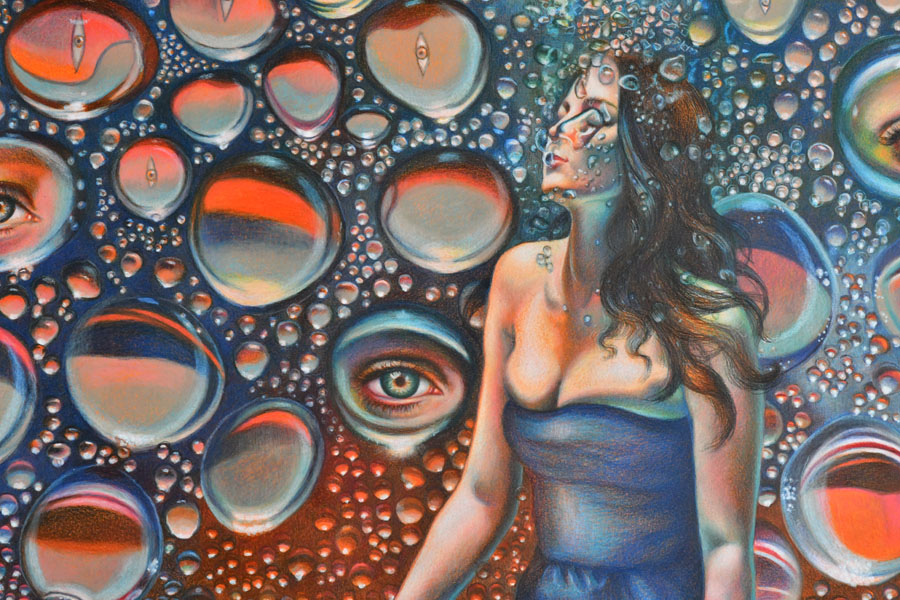
Winsor & Newton Pigment marker, white blender is a very soft white. It’s not suitable to make strong, white highlights, but what I discovered working with it is more useful. Once I’ve done some colored pencil shading, I can blend everything with this marker. It does give some white tint to the surface, but it also blends colored pencil well. So I use it when I want to both blend and lighten up the area. I think it could be replaced with a different brand to have the same effect, but you need to always TEST your art materials on a separate piece of paper.
Although I’m not a fan of these markers, a similar alcohol markers will do the same job. They can blend colored pencils. You can also underpaint the surfaces with such markers. Pay attention to the lightfastness of markers. Don’t buy fugitive colors because they’ll fade quickly off of your paper!
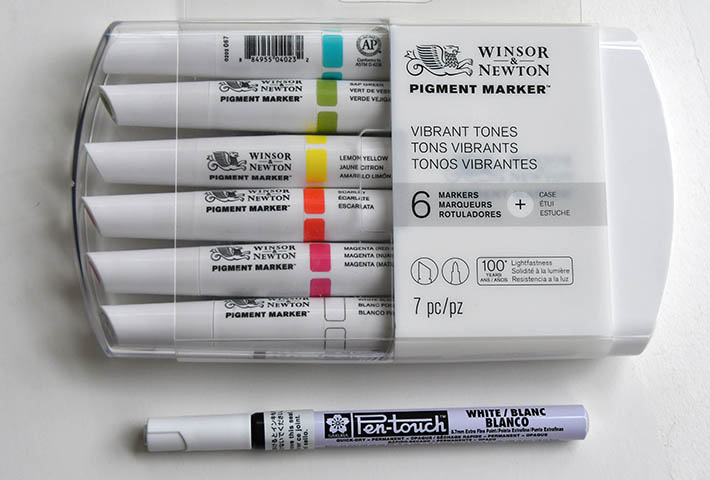
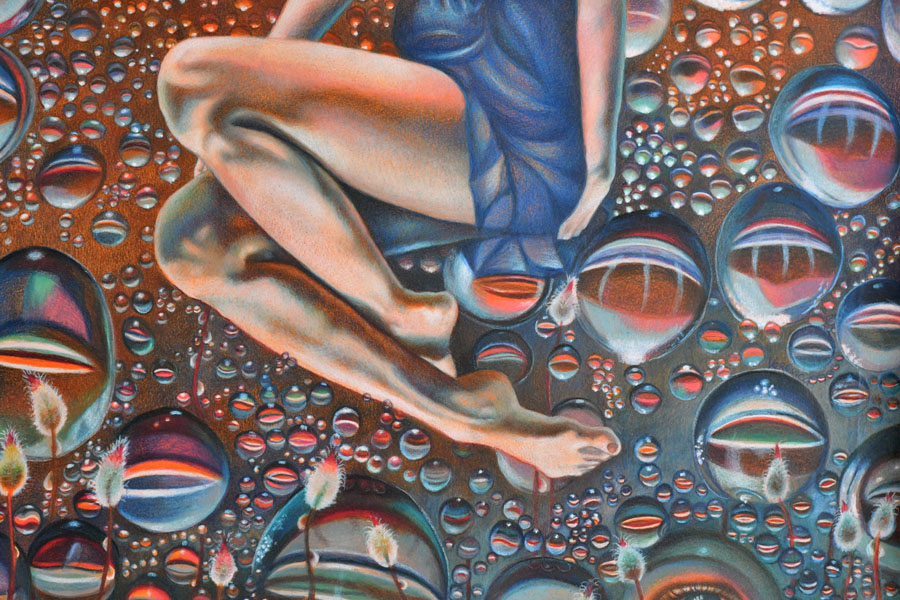
Always test your ideas on a separate piece of paper before committing to actual drawing! It’s very frustrating to ruin your colored pencil drawing testing something new right on it.
Check out all video courses and tutorials here: https://veronicasart.com/product-category/step-by-step-drawing-tutorials/
